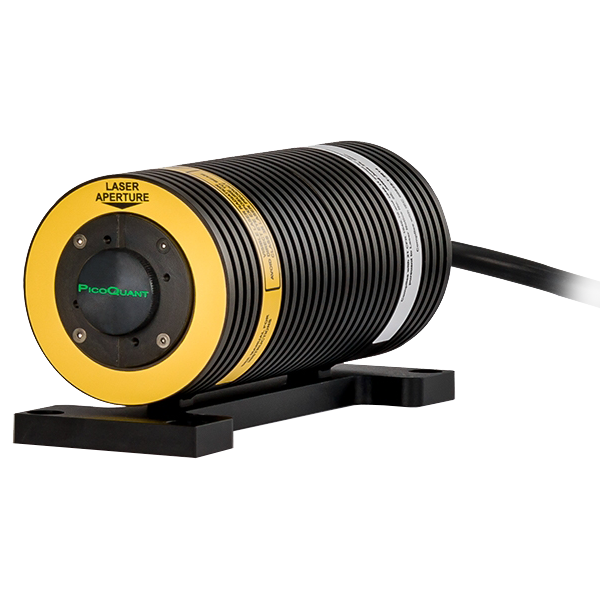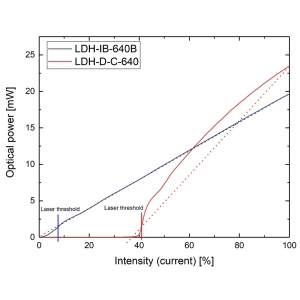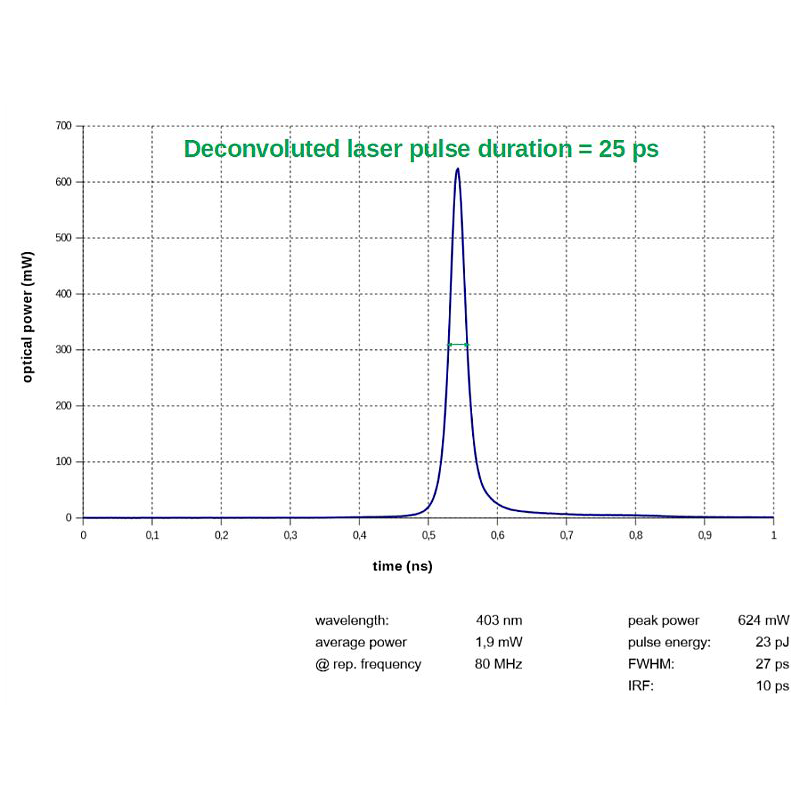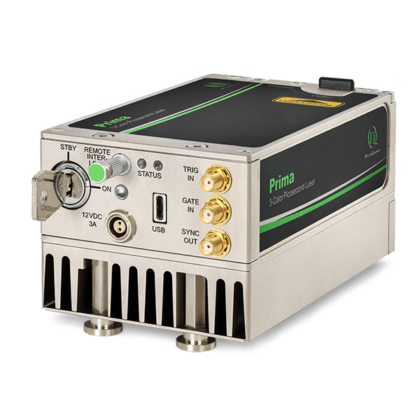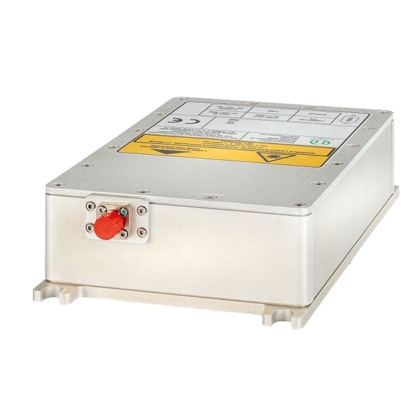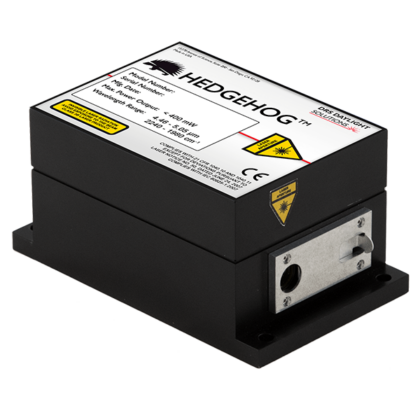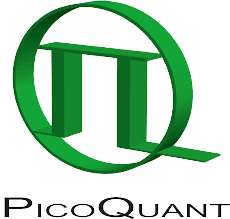Smart Laser Diode Heads for Taiko PDL M1
- Dual calibration – max power and linear mode
- High power multimode diodes in Vis and NIR
- Coming soon: 532, 561, and 594 nm
- Wavelengths between 375 nm and 1550 nm
- Pulse widths as short as 20 ps (FWHM)
- Repetition rate from single shot to 100 MHz
- Adjustable (average) power up to 200 mW
- Pulsed, bursts, and CW operation
- Power calibrated, operating hours counter, TE cooled
- Collimated beam, optional fibre coupling
LDH-I Series features a large range of smart laser heads compatible with the Taiko PDL M1 driver. Laser heads from this series provide wavelengths in the spectral range from 375 to 1550 nm and include power calibrations. When coupled with a Taiko PDL M1, their optical output power can be controlled in both pulsed and continuous modes. Additionally, a wavelength calibration is available in CW mode. Each laser head is identified by the Taiko PDL M1 driver and includes not only linearized calibration data but also an operating hours counter.
Pulse widths down to 20 ps
Pulse profile of an IB-405-B laser headAll laser heads emit picosecond pulses with a full width at half maximum (FWHM) typically around 90 ps or below. For some laser heads even pulse widths down to 20 ps are possible. The pulse width itself cannot be controlled directly, but does depend on the selected power level of the diode. At maximum intensity, the pulse width can broaden.
Adjustable and calibrated average power
Linear intensity ldhiThe laser heads are calibrated for two distinct modes: the classic linear mode the new max. power mode.
In linear mode, both pulse energy and pulse shape are guaranteed to remain constant over the entire range of repetition rates for a given intensity setting. This ensures a very stable instrument response function (IRF) for, e.g., lifetime measurements and offers perfect linearity of average power for every repetition rate. As a consequence, doubling the repetition rate therefore effectively doubles the average output power.
The max. power mode allows reaching the highest pulse energy at each repetition rate. The exact amount of extra power that can be achieved depends both on the connected laser head as well as on the repetition rate at which it is operated.
In either mode the pulse energy increases linearly with the intensity setting (in %).
The levels of average optical output power are measured and saved in the internal memory of the laser head as mW / W calibration data for all repetition rates between 1 MHz and 100 MHz typically. The average power in CW mode is calibrated as well.
Three lasing regimes of the laser diode, which depend on the intensity setting, are identified and plotted: spontaneous emission (below laser threshold), short pulse (lower intensity setting), broaden pulse (higher intensity setting). The currently set regime is recognized and shown on the local display of the Taiko PDL M1 with an intuitive color code on the intensity scale.
The achievable pulse energies range from several tens of pico joule to up to 2 nanojoules , which corresponds to maximum average output powers of up to 150 mW milliwatts at high repetition rate.
Repetition rates up to 100 MHz
All laser heads are designed to work at repetition rates from single shot up to values in the MHz range. The maximum repetition rate depends on each single diode and is typically 100 MHz. For some laser heads a maximum repetition rate of e.g., 60 MHz is recommended in order to ensure a constant pulse energy at all repetition rate.
Pulsed, bursts and CW operation
All laser heads of the LDH-I Series can be operated in pulsed, burst, and CW mode. While the pulsed mode corresponds to a constant repetition rate commonly used for time-resolved measurement, the burst mode enables generation of flexible bursts of pulses (with selectable amount of pulses and burst period) which is useful for measuring long lifetime decays, laser ranging applications and specific seeding tasks. The CW mode enables a much higher average laser power.
Hot plug capable
As an additional feature, laser heads of the LDH-I Series are capable of hot plugging. This means that swapping laser heads to change wavelength no longer requires to turn off the driver.
Fibre coupling
The laser heads of the LDH-I Series can be optionally coupled into a variety of optical fibres (multi-mode, single mode, or polarization maintaining single mode) via different connector types. We recommend FC/APC connectors for most applications, since they prevent back reflections that can interfere with laser stability.
































